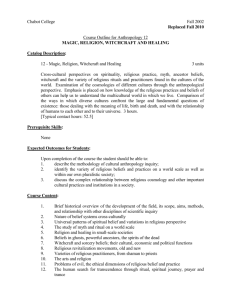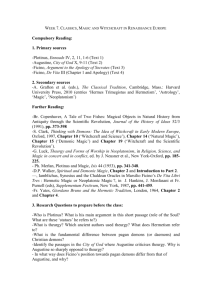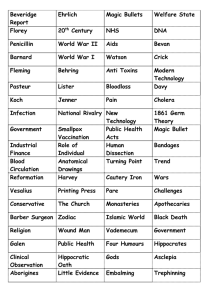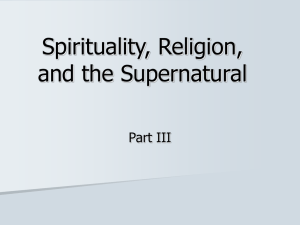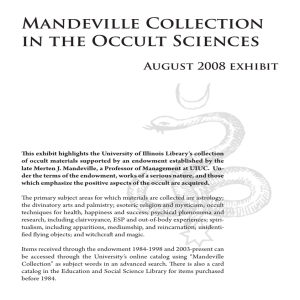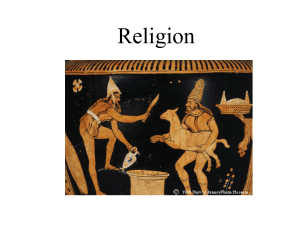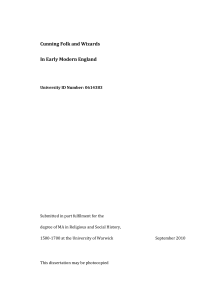Spooky Poems! Using Google Docs, and simultaneously working
advertisement
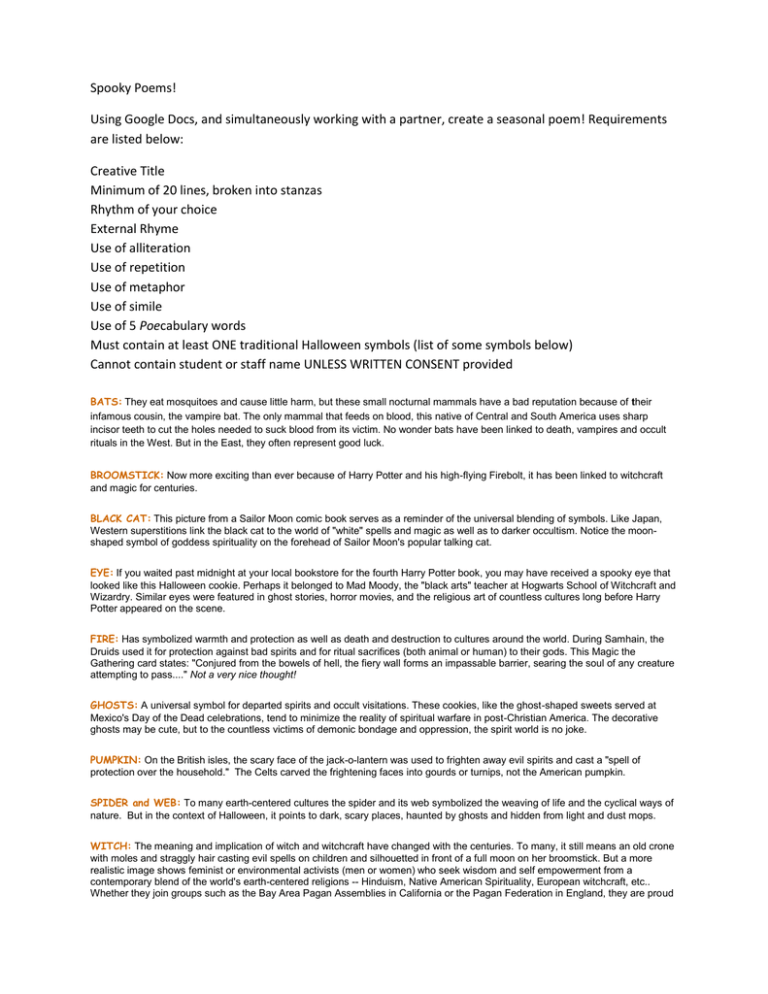
Spooky Poems! Using Google Docs, and simultaneously working with a partner, create a seasonal poem! Requirements are listed below: Creative Title Minimum of 20 lines, broken into stanzas Rhythm of your choice External Rhyme Use of alliteration Use of repetition Use of metaphor Use of simile Use of 5 Poecabulary words Must contain at least ONE traditional Halloween symbols (list of some symbols below) Cannot contain student or staff name UNLESS WRITTEN CONSENT provided BATS: They eat mosquitoes and cause little harm, but these small nocturnal mammals have a bad reputation because of their infamous cousin, the vampire bat. The only mammal that feeds on blood, this native of Central and South America uses sharp incisor teeth to cut the holes needed to suck blood from its victim. No wonder bats have been linked to death, vampires and occult rituals in the West. But in the East, they often represent good luck. BROOMSTICK: Now more exciting than ever because of Harry Potter and his high-flying Firebolt, it has been linked to witchcraft and magic for centuries. BLACK CAT: This picture from a Sailor Moon comic book serves as a reminder of the universal blending of symbols. Like Japan, Western superstitions link the black cat to the world of "white" spells and magic as well as to darker occultism. Notice the moonshaped symbol of goddess spirituality on the forehead of Sailor Moon's popular talking cat. EYE: If you waited past midnight at your local bookstore for the fourth Harry Potter book, you may have received a spooky eye that looked like this Halloween cookie. Perhaps it belonged to Mad Moody, the "black arts" teacher at Hogwarts School of Witchcraft and Wizardry. Similar eyes were featured in ghost stories, horror movies, and the religious art of countless cultures long before Harry Potter appeared on the scene. FIRE: Has symbolized warmth and protection as well as death and destruction to cultures around the world. During Samhain, the Druids used it for protection against bad spirits and for ritual sacrifices (both animal or human) to their gods. This Magic the Gathering card states: "Conjured from the bowels of hell, the fiery wall forms an impassable barrier, searing the soul of any creature attempting to pass...." Not a very nice thought! GHOSTS: A universal symbol for departed spirits and occult visitations. These cookies, like the ghost-shaped sweets served at Mexico's Day of the Dead celebrations, tend to minimize the reality of spiritual warfare in post-Christian America. The decorative ghosts may be cute, but to the countless victims of demonic bondage and oppression, the spirit world is no joke. PUMPKIN: On the British isles, the scary face of the jack-o-lantern was used to frighten away evil spirits and cast a "spell of protection over the household." The Celts carved the frightening faces into gourds or turnips, not the American pumpkin. SPIDER and WEB: To many earth-centered cultures the spider and its web symbolized the weaving of life and the cyclical ways of nature. But in the context of Halloween, it points to dark, scary places, haunted by ghosts and hidden from light and dust mops. WITCH: The meaning and implication of witch and witchcraft have changed with the centuries. To many, it still means an old crone with moles and straggly hair casting evil spells on children and silhouetted in front of a full moon on her broomstick. But a more realistic image shows feminist or environmental activists (men or women) who seek wisdom and self empowerment from a contemporary blend of the world's earth-centered religions -- Hinduism, Native American Spirituality, European witchcraft, etc.. Whether they join groups such as the Bay Area Pagan Assemblies in California or the Pagan Federation in England, they are proud to be called Pagan, Witch or Wiccan. They share a common interest in spells, magic ("white", not black) and full moon rituals -- all set in a framework of a new cosmology based on a personal or impersonal pantheistic goddess. WIZARD: A master of occult knowledge and powers who uses timeless and universal rituals, magic formulas and spells to connect with the spirit world and manipulate its forces. His role and prestige corresponds to that of the shaman or witchdoctor in animist tribes, the priest or guru of New Agers, or the Druids who led the Celts in spiritual matters while advising in political matters. This picture shows today's blending of the cultures. Like a Native American medicine man, the wizard carries ceremonial feathers in a cluster below his waist, while his hand holds a rod that resembles a peace pipe embellished with feathers.


